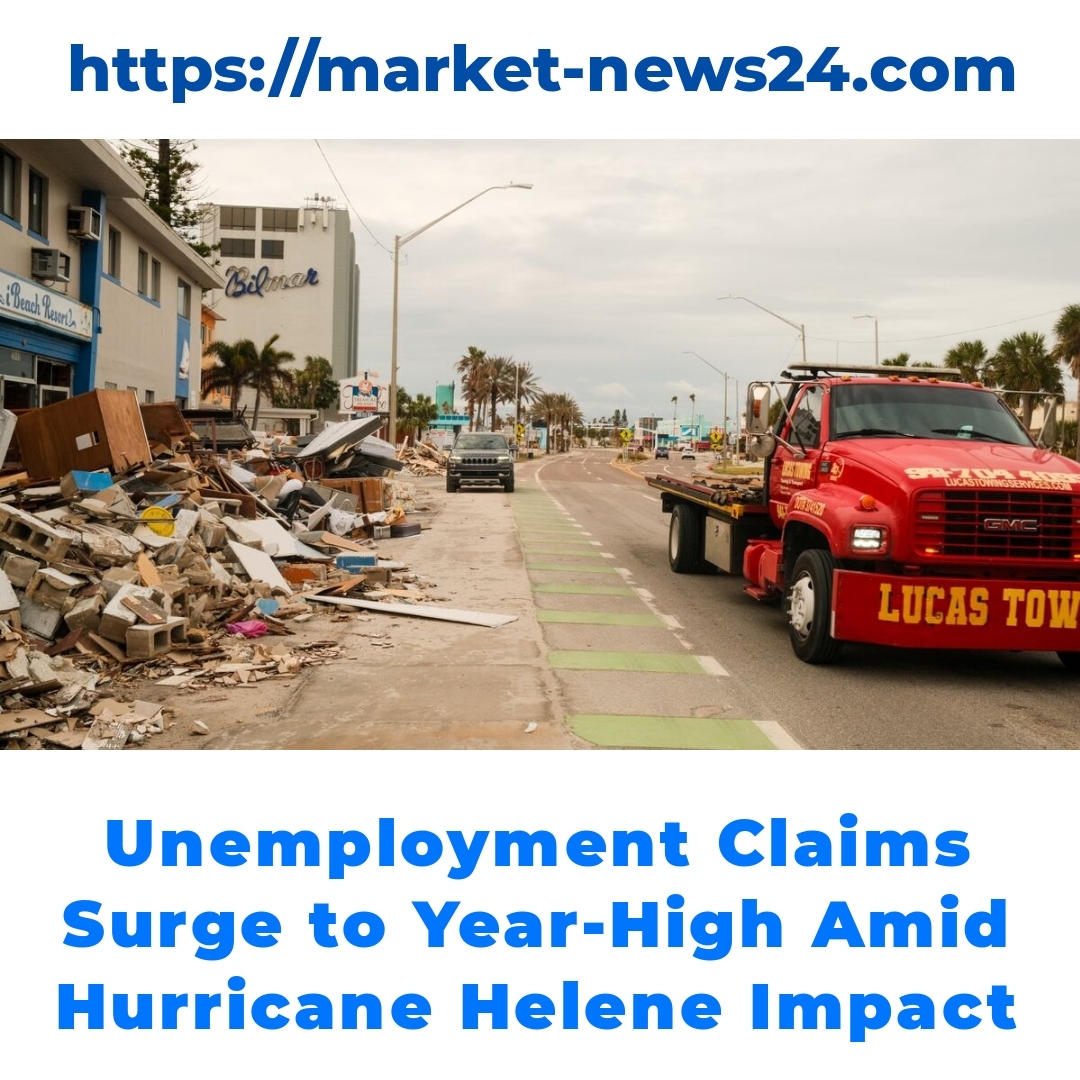Applications for US unemployment benefits have surged recently, reaching one-year highs amid the disruptions caused by Hurricane Helene. This natural disaster has significantly affected employment in various states, particularly Michigan, leading to an increase in unemployment claims and raising concerns about the overall economic health of affected regions.


Current Trends in US Unemployment Benefits
There’s no doubt that US unemployment benefits play a crucial role in providing support to those who’ve lost their jobs, especially during challenging times. Recently, applications for these benefits have surged, with statistics showing a notable increase in unemployment claims. In fact, the current figures have reached one-year highs, underscoring the significance of these safety nets in the labor market. Factors like natural disasters and shifting economic conditions are heavily contributing to this uptick in unemployment claims, making it essential to delve into what’s driving this trend.
Understanding Unemployment Claims
What Are Unemployment Claims?
Unemployment claims are requests for financial assistance made by individuals who are out of work and seeking unemployment benefits. These claims are part of state and federal assistance programs designed to support those facing unexpected job loss. When someone loses their job, they can apply for unemployment benefits through their state’s unemployment office. The process typically involves filling out an application form, providing necessary documentation, and waiting for a determination regarding eligibility.
Recent Data on Unemployment Claims
The latest data reveals a concerning rise in jobless claims across the nation. Specific statistics show that states like Michigan have seen a significant leap in the number of unemployment claims filed. This raise not only highlights the immediate impact of Hurricane Helene but also reflects wider trends in the labor market, contributing to the overall concern about economic stability.
The Impact of Hurricane Helene on State Unemployment Rates
Hurricane Helene Impacts
Hurricane Helene has left a substantial mark on employment in affected states. In particular, the storm disrupted many business operations, leading to job cuts and temporary layoffs. States hit hardest by the hurricane have reported noticeable spikes in unemployment rates. Analyzing the numbers before and after the storm reveals how quickly natural disasters can alter the employment landscape in regions that are already vulnerable.
Michigan Job Statistics
Focusing on Michigan, the job statistics have changed dramatically due to Hurricane Helene. The state has experienced surging unemployment claims, outpacing national averages in many cases. This situation speaks volumes about the resilience of their job market and reflects broader patterns seen in other regions affected by the hurricane. Understanding how Michigan stacks up against these national trends can provide valuable insights into the overall health of the economy.
The Economic Impact of Rising Unemployment Claims
Labor Market Trends
As unemployment claims rise, it’s crucial to explore the impacts on broader labor market trends. The increase in jobless claims often correlates with economic slowdowns and shifts in various sectors. Industries like retail, hospitality, and construction tend to feel the effects first, often leading to layoffs and a higher demand for unemployment benefits. This cycle can create a challenging environment for both workers and employers in the long run.
Disaster Effects on Employment
Natural disasters like Hurricane Helene have a lasting impact on unemployment rates. Historically, regions experiencing such disasters have seen temporary spikes in unemployment, followed by a lengthy recovery process. Often, the long-term implications include job instability and shifts in local economies that may never fully bounce back to previous levels. Understanding these patterns helps policymakers and communities prepare for the future.
Conclusion
In summary, the rise in applications for US unemployment benefits highlights the ongoing effects of Hurricane Helene on the job market. With record-high unemployment claims and significant shifts in state unemployment rates, it’s vital to monitor these trends closely. Keeping an eye on unemployment statistics can offer valuable insights into the economic health of various states, particularly as communities strive to recover from such devastating events.
Call to Action
If you or someone you know has been impacted by Hurricane Helene, it’s essential to stay informed about your state’s unemployment statistics and the assistance programs available. Resources exist to help those in need navigate the application process for US unemployment benefits, ensuring that support is accessible during these challenging times.
What are unemployment claims?
Unemployment claims are requests for financial assistance from individuals who have lost their jobs and are seeking unemployment benefits. To apply, individuals usually need to submit an application form and provide necessary documentation to their state’s unemployment office.
Why have unemployment claims surged recently?
The recent surge in unemployment claims can be attributed to several factors including:
- Natural disasters, like Hurricane Helene, which have disrupted businesses and led to job losses.
- Shifts in economic conditions that affect various industries, leading to layoffs.
- Increased applications due to economic uncertainties.
How has Hurricane Helene affected unemployment rates?
Hurricane Helene has had a significant impact on employment, particularly in states that were most affected. Many businesses temporarily closed or cut jobs, resulting in increased unemployment claims. The storm has caused noticeable spikes in unemployment rates in these regions.
What are the implications of rising unemployment claims?
The rise in unemployment claims often signals broader trends in the economy, such as potential economic slowdowns. This situation can lead to:
- Heightened layoffs within vulnerable industries like retail, hospitality, and construction.
- Increased demand for unemployment benefits, putting stress on assistance programs.
- Long-term job instability and economic shifts in affected areas.
What resources are available for those affected by unemployment?
Individuals impacted by unemployment can access various resources, including:
- State unemployment offices for guidance on applications and eligibility.
- Community assistance programs that offer support during job loss.
- Online resources and hotlines for additional information on unemployment benefits.





